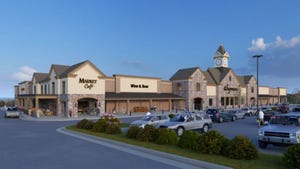Strike Dings Ahold Delhaize's Q2 U.S. Sales and Profits; Recovery on Track
As Stop & Shop recovers, sister chains led by Food Lion wring out U.S. comp gains. The retailer is still fighting to win back customers lost to the Stop & Shop strike, but results highlight sales momentum elsewhere.

The surprise strike at Stop & Shop stores in New England this spring cost parent Ahold Delhaize about $224 million in sales and $100 million in operating income absorbed in the retailer’s second quarter, but a resilient brand and strong performance among Stop & Shop’s U.S. sisters helped the company eke out quarterly improvements in sales and comps.
For the quarter, U.S. sales totaled $11 billion, a 0.2% increase, and nonfuel U.S. comparable-store sales also improved by 0.2%. Excluding the impact of the strike, and adjusted for the timing of the Easter holiday, U.S. nonfuel comps grew by 2.3%, officials of the Dutch retailer said.
Officials said Stop & Shop, whose stores throughout New England were ground to a halt for 11 days when workers walked out just ahead of the busy Easter and Passover shopping week in April, had recovered most but not all of its prestrike sales and prestrike customers. In addition to the $224 million in direct sales lost due to the strike, officials estimate another $121 million had been lost since as volumes crept back. The income hit associated with the strike and recovery—primarily, shrink in stores and distribution centers, margin on lost sales and increased markdowns—was largely contained in the quarter, although as previously disclose, it dampened the company’s annual outlook.
“The main impact has been on transactions,” Chief Financial Officer Jeff Carr said in a conference call with analysts. “It hasn’t been on the basket size, which hasn’t really been impacted by the strike. It’s really been getting the last one or two percentage of customers back into the store.”
Carr said the company was luring those shoppers back with price investments, promotions and personalized offers.
“We understand who those customers are,” he said. “We can target those customers through digital activities and bring them back into the store. And a lot of promo activity … is very highly personalized promotional activity.”
The strike may also have resulted in a change of leadership at Stop & Shop, as Gordon Reid, president of Landover, Md.-based Giant Food, replaced Mark McGowan last month. Ahold Delhaize is beginning negotiations with 17,000 union workers at the Landover unit in October. “We are in a very good dialogue already for quite some time in the run-up to those negotiations,” Ahold Delhaize CEO Frans Muller said. “So we are focused [and] alert, but we have confidence that we will close those negotiations in a constructive way.”
Strong growth at Ahold Delhaize’s other U.S. brands—Hannaford, Giant-Landover, Giant/Martin’s and especially Food Lion—helped to mitigate the strike’s impact, while online sales growth and an ongoing repositioning of Stop & Shop’s fleet on Long Island were encouraging, officials noted.
Food Lion posted its 17th consecutive quarter of comparable sales growth as its "Easy, Fresh and Affordable" brand renewal continued to grow volumes at that chain. That initiative has now hit about 80% of Food Lion’s 1,000 stores, with another 115 set to undergo renovations in the second half. Online sales in the U.S. totaled $249 million, a 14.4% increase largely related to expansion of click-and-collect at Food Lion and Giant/Martin’s, now in 483 stores and expected at 600 by year-end. About 80% of the company’s online sales are coming through Peapod delivery.
The “Reimagine Stop & Shop” initiative, which the company debuted last fall at 21 stores in the Hartford, Conn., market, is underway on Long Island. Muller said the Hartford stores, although impacted by the strike and still performing slightly under plan, were outperforming comparable stores in the chain, and that the company was applying learnings from that test to the Long Island renovations. Stop & Shop plans to invest between $1 million and $10 million per store to renovate all 400 of its locations over five years.
Asked to elaborate on the changes coming to Long Island, Muller said, “We learned a few things [in Hartford] on labor in the fresh department. We went one step further in remodeling of the center store.” The company is also making further adjustments in costs and pricing.
“Sometimes pricing is less elastic than you may assume, sometimes you have to invest less than you originally thought,” Muller said. “So we are still in the testing phase, but we learned from the first testing in Hartford to do a better job in Long Island.”
Also in the review stage is the micro-fulfillment center Stop & Shop built at the site of one of its Hartford stores. The center, run by Takeoff Technologies, uses automated picking to speed and address costs associated with fulfilling online shopping orders. Although the Takeoff center is operational now, “we’re not there yet in the projected productivity levels, but we're getting closer,” Muller said.
Carr emphasized that the Takeoff facility would not affect the company’s projected e-commerce sales, but rather their productivity. “And if we don’t see the productivity really playing back, we’re going to hold back on the further investments until we do get that. So it’s important with fulfillment that we improve the profitability of e-commerce, and that's really what Takeoff is about. It’s about improving our labor productivity. … I think it’s an important point just to emphasize that our overall sales performance in e-commerce can continue to grow with or without Takeoff.”
About the Author
You May Also Like






